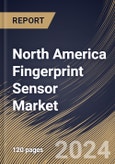Fingerprint sensors are primarily used for identity verification, offering a secure and reliable method to confirm an individual's identity. This application is crucial in sectors such as law enforcement, border control, and secure facilities where accurate identification is paramount. Fingerprint sensors have become a standard feature in smartphones, providing a convenient and secure method for unlocking devices and authorizing various functions. Mobile payment authentication, app access, and secure data storage are key uses in this context. Fingerprint sensors play a vital role in access control systems across industries. From securing office buildings to restricting entry in high-security areas, these sensors ensure that only authorized individuals can access specific locations.
In workplaces and educational institutions, fingerprint sensors are employed for time and attendance tracking. This use helps organizations accurately record work hours, prevent time fraud, and streamline payroll processes. Fingerprint sensors are widely used for secure and convenient transactions in the financial sector. Users can authenticate financial transactions using their fingerprints at ATMs or online banking, adding an extra layer of security. Fingerprint sensors contribute to securing electronic healthcare records. By restricting access to patient information through biometric authentication, healthcare providers ensure compliance with privacy regulations and protect sensitive medical data.
Fingerprint sensors can be integrated with security surveillance systems, providing an additional layer of identity verification for individuals entering and exiting commercial buildings in Mexico. In the hospitality industry, fingerprint sensors can be used for secure access to guest rooms, ensuring that only registered guests can enter their assigned accommodations in Mexico. Fingerprint sensors contribute to access control in pharmaceutical and healthcare facilities, restricting entry to areas where sensitive medical supplies and equipment are stored in Mexico. Hence, the factors mentioned above will drive the regional market growth.
The US market dominated the North America Fingerprint Sensor Market, by Country in 2022, and would continue to be a dominant market till 2030; thereby, achieving a market value of $2,143.6 Million by 2030. The Canada market is experiencing a CAGR of 15% during (2023 - 2030). Additionally, The Mexico market would exhibit a CAGR of 14% during (2023 - 2030).
Based on Technology, the market is segmented into Capacitive, Thermal, Optical, and Others. Based on Vertical, the market is segmented into Consumer Electronics, Government & Defense, BFSI, Healthcare, Commercial Security, Smart Homes, Travel & Immigration, and Others. Based on countries, the market is segmented into U.S., Mexico, Canada, and Rest of North America.
List of Key Companies Profiled
- Japan Display, Inc.
- Apple Inc.
- Synaptics Incorporated
- Gemalto NV (Thales Group S.A)
- Precise Biometrics AB
- NEC Corporation
- Fingerprint Cards AB
- IDEMIA SAS (Advent International, Inc.)
- NEXT Biometrics Group ASA
- Anviz Global Inc.
Market Report Segmentation
By Technology (Volume, Thousand Units, USD billion, 2019-2030)- Capacitive
- Thermal
- Optical
- Others
- Consumer Electronics
- Government & Defense
- BFSI
- Healthcare
- Commercial Security
- Smart Homes
- Travel & Immigration
- Others
- US
- Canada
- Mexico
- Rest of North America
Table of Contents
Companies Mentioned
- Japan Display, Inc.
- Apple Inc.
- Synaptics Incorporated
- Gemalto NV (Thales Group S.A)
- Precise Biometrics AB
- NEC Corporation
- Fingerprint Cards AB
- IDEMIA SAS (Advent International, Inc.)
- NEXT Biometrics Group ASA
- Anviz Global Inc.
Methodology

LOADING...








